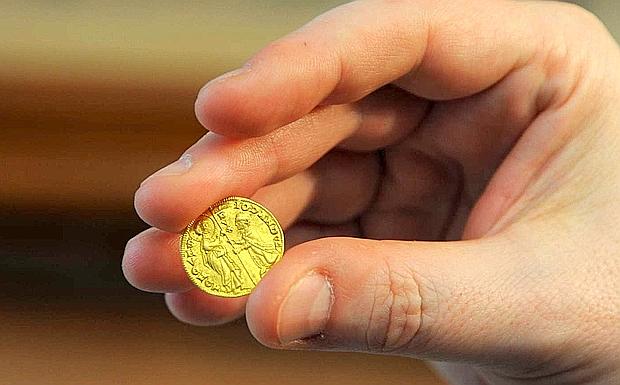Zecchino is
a powerful gold coin weighed 3.5
grams of pure gold, minted by the Republic of Venice from 1284 to 1797. Initially
called ducato, then zecchino
from the name of the Venetian mint,
the "zecca". Having
an ancient gold
zecchino, one of the most
appreciated coins in the ancient world, means to have a truly amazing
piece of history of a
Republic so long renowned for its wealth, power, and commercial
enterprise. An incomparable gift for a student who is about to graduate
(graduation gift idea) in history, archeology, cultural heritage, etc.,
or to any person who is passionate about antiques.
|
|
|||||||||
|
|
|||||||||
| N. | Denomination
(certified) |
Rare (1-5) or Common | Quality
(certified)
|
Description
What you see is what you get |
Diameter
mm. (certified) |
Weight
gr. (certified) |
|
||
| 1 | Ducato
Gold (Au) Francesco Dandolo(1329-1339) |
Rare
(R) |
SPL+ extremely fine (EF, XF o AU) |
Foto 1 | 21 | 3,5 | sciretti.alberto@sciretti.it | ||
| 2 |
Ducato
Gold (Au) Andrea Dandolo(1343-1354) |
Rare (R) Fr-1221 |
(qFDC)
about o brilliant uncirculated (MS o BU) |
Foto 1 | 21 |
3,5 |
sciretti.alberto@sciretti.it |
||
| 3 | Ducato Gold (Au) Giovanni Dolfin (1356-1361) |
Rare
(R) Fr-1224 |
BB+
very fine (VF) |
Foto 1 | 21 | 3,49 | sciretti.alberto@sciretti.it | ||
| 4 | Ducato
of Achaia
Gold (Au) (1346-1364) |
Rare.
Robert of Taranto (Anjou),
Fr-38a. This
coin was minted in Achaia
as an imitation of the Venetian Ducats of Andrea
Dandalo.
Achaia was established during the Fourth Crusade as a Crusader State in
1205.
This coin has been listed at $2000 in Friedberg.
|
SPL+ extremely fine (EF, XF o AU)
|
Foto 1
|
21 | 3,5 | |||
| 5 | Ducato
Gold (Au) (1365-1368) |
Very
Rare (R2) |
SPL
extremely fine (EF, XF o AU) |
Foto 1 | 21 | 3,5 | sciretti.alberto@sciretti.it | ||
| 6 | Ducato
Gold (Au) Michele Steno(1400-1413) |
Common |
SPL+ extremely fine (EF, XF o AU)
|
Foto 1 | 21 | 3,5 | |||
| 7 | Ducato
Gold (Au) Tommaso Mocenigo(1414-1423) |
Common | (qFDC)
about o brilliant uncirculated (MS o BU) |
Foto 1 | 21 | 3,5 | sciretti.alberto@sciretti.it | ||
| 8 | Ducato
Gold (Au) Francesco Foscari(1423-1457) |
Rare
(R) |
SPL
extremely fine (EF, XF o AU)
|
Foto 1 | 21 | 3,5 | |||
| 9 | Ducato
Gold (Au) Pasquale Malipiero(1457-1462) |
Very
Rare (R2) |
SPL
extremely fine (EF, XF o AU) |
Foto 1 | 21 | 3,5 | sciretti.alberto@sciretti.it | ||
| 10 | Scudo
Gold (Au) Andrea Gritti (1423-1539) |
Rare | MS63 | Foto 1 | 3,4 | sciretti.alberto@sciretti.it | |||
| 11 | Ducato
Gold (Au) Pietro Lando(1539-1545) |
Rare
(R) |
BB+
very fine (VF)
|
Foto 1 | 21 | 3,5 | |||
| 12 | Zecchino
Gold (Au) Francesco Donà(1545-1553) |
Rare
(R) |
(See the photo) | Foto 1 | 21 | 3,46 | |||
| 13 | Zecchino
Gold (Au) Francesco Venier(1554-1556) |
Very
Rare (R2) |
(See
the photo)
BB+ very fine (VF)
|
Foto 1 | 21 | 3,43 | |||
| 14 | Zecchino
Gold (Au) (1556-1559) |
Very
Rare (R2) |
FDC | Foto 1 | 21 | 3,43 | sciretti.alberto@sciretti.it | ||
| 15 | Zecchino
Gold (Au) Francesco Molin(1646-1655) |
Common | BB+
very fine (VF)
|
Foto 1 | 21 | 3,5 | |||
| 16 | Zecchino
Gold (Au) Marcantonio Giustinian(1684-1688) |
Rare
(R) |
SPL
extremely fine (EF, XF o AU)
|
Foto 1 | 21 | 3,5 | |||
| 17 | Zecchino
Gold (Au) Francesco Morosini (1688-1694)
|
Rare
(R)
|
(qFDC)
about o brilliant uncirculated (MS o BU)
|
Foto 1 | 21 | 3,48 gr. | |||
|
If you want to ask me something about an ancient zecchino send an e-mail to sciretti.alberto@sciretti.it |
|||||||||
|
All the coins are guaranteed and certified authentic and genuine. All the coin's defect (that is not possible to see from the picture) are carefully described.
|
|||||||||
|
The Zecchino was the purest and most accurately measured gold coin in late medieval Europe and as such it became the World's standard unit of currency for nearly half a millennium.
|
|||||||||
|
The
Power of
Zecchino |
|||||||||


